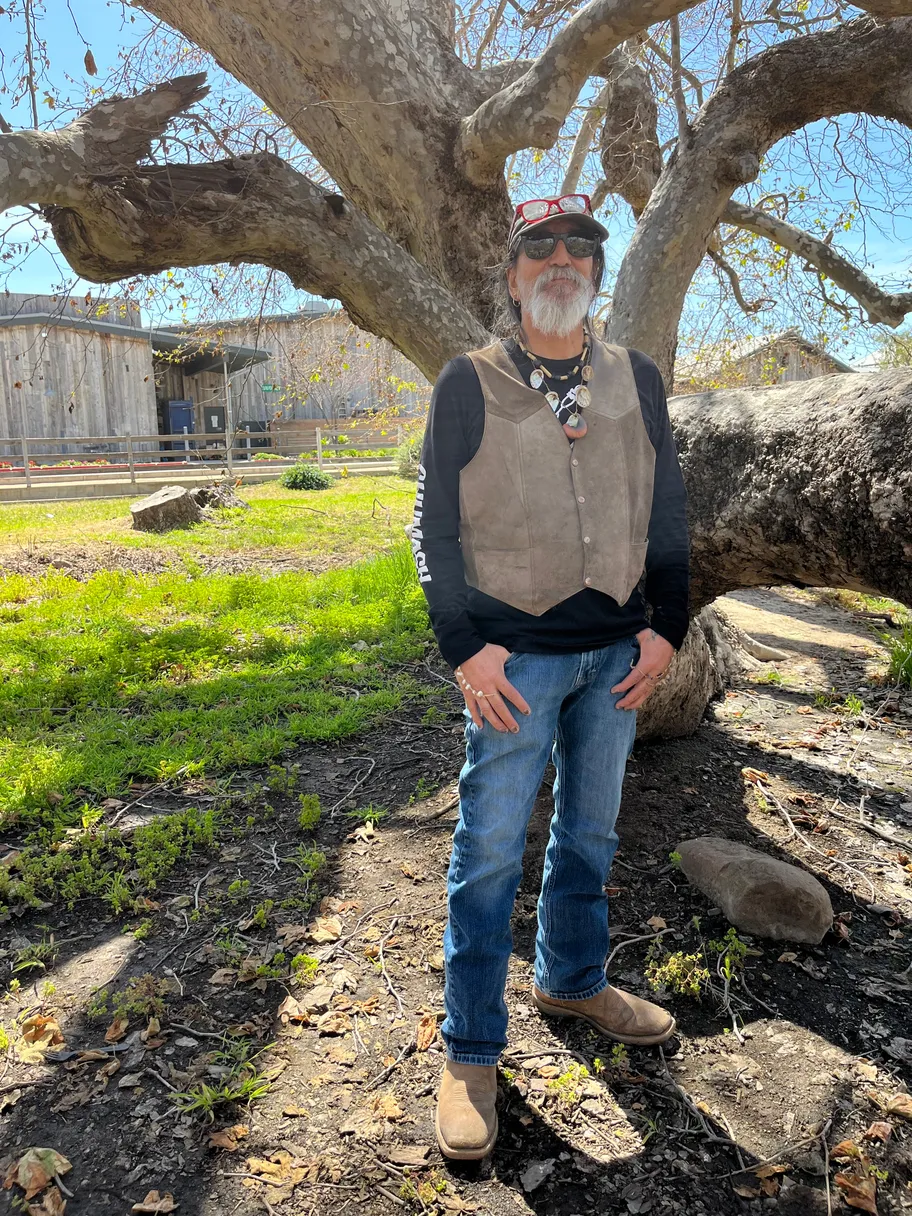Biologist Rosi Dagit dreams of seeing the Southern California steelhead trout return to the creeks of the Santa Monica Mountains.
Hundreds of years ago — before the local creeks were dammed, before the Spanish established their missions — the spotted pink, silver, and olive-colored fish, some more than two feet in length, were relatively abundant in Malibu Creek.
Like a salmon, the steelhead is born in freshwater, spends its life in the ocean, then returns to freshwater to mate. But unlike a salmon, it doesn’t have to return to its birthplace to spawn, and it doesn’t necessarily die after reproducing. It can swim back to the ocean and live to spawn another year.
So far this year, only one individual Southern California steelhead (or simply Southern steelhead) trout has been spotted — in the Ventura River. Between 1994 and 2018, only 177 oceangoing individuals were counted along the Southern California coast.
But Dagit has hope. Her experience with the fish has been painful and intimate.
In 2017, the senior conservation biologist with the Resource Conservation District of the Santa Monica Mountains got a call from a team member: There was a struggling female at the edge of Malibu Creek below the Rindge Dam.
Dagit went to see for herself. The steelhead was 23 inches — “massively strong,” she says. But it put up no fight.
“You know how bad it is when she just let me gently pick her up and hold her so that she was facing into the current and getting more oxygen, and was just barely moving her gills,” Dagit says. “While I was holding her, she just stopped moving” and died.
That was the last steelhead anyone has seen in Malibu Creek.
Now Dagit and a whole team of scientists, conservationists, and volunteer naturalists are embarked on an effort to keep that doomed steelhead from being the last in the watershed.
California State Parks is leading a project to restore Malibu Creek, with the goal of bringing the 109-square-mile watershed back to a state that can support the federally endangered Southern steelhead and many other species native to the Santa Monica Mountains.
They believe that by carefully removing the obstacles that lie between the steelhead trout and their spawning grounds, they can coax those that remain in Southern California to return.
For David Paul Dominguez, a member of the Santa Ynez Band of Chumash Indians, it’s personal. He says his ancestors would build small temporary dams near Malibu Lagoon and use them to trap steelhead as they swam upstream to spawn.
He recalls his reaction to seeing a Southern steelhead in Malibu Lagoon in 2014.
“It’s goosebumps, man, it’s tears,” Dominguez says. “To see that prehistoric person, still alive, lived during prehistoric times, like ourselves … we call them relatives for a reason. Because we had the same injustice enforced upon us.”

David Paul Dominguez, a member of the Santa Ynez Band of Chumash Indians, says Southern steelhead trout were an important source of food for his ancestors. “They’re full of roe. They’re full of fat,” he says. “They’ve been out here just gearing up to make that trek.” Photo by Will Callan.
Restoring the watershed
The Southern steelhead, whose historical habitat stretches from the Santa Maria River in San Luis Obispo County to the Tijuana River, is especially resilient. They’re more temperature tolerant than other steelhead strains, with genes adapted to the south coast’s warmer waters, and they migrate according to the region’s rainfall and streamflows.
These adaptations, says Dagit, mean the Southern steelhead could be “the savior of all steelhead.” As waters warm along the entire California coast, the Southern steelhead could “potentially recolonize” streams in which northern strains could not survive.
And because it’s a keystone species, a robust steelhead population in a place like Malibu Creek means a healthy ecosystem overall.
“The steelhead is really an indicator species of how healthy the system is,” says Danielle LeFer, senior environmental scientist for the Angeles District of California State Parks. “It’s sensitive to oxygen levels and water quality, so when you find it in certain areas where it wasn’t found before, you know that it’s a higher-quality system.”
Still, development within watersheds has brought some changes that no fish could adapt to, like barriers that seal off prime habitat for spawning and rearing. Things like culverts and bridges – and dams.
Removing the Rindge Dam
Built in 1926 to divert water for irrigating crops, the long-obsolete Rindge Dam stands just three miles upstream from Malibu Lagoon.
“That’s as far as [the steelhead] can get,” says LeFer. Even though those three miles are in relatively good shape, “it’s just not enough high-quality habitat to support a large population.”
As the largest watershed in the Santa Monica Mountains, an undammed Malibu Creek could play a large role in supporting the Southern steelhead overall.
And the dam’s removal, which would open up 15 more miles of habitat, is now in progress.
Technically, it’s been underway since 1992, when the U.S. House of Representatives commissioned a study to explore revitalizing Malibu’s watershed and shoreline. But this April marked a milestone, with state parks announcing the beginning of the project’s design and permitting phase.
A spokesperson with the parks department said the actual removal could begin this decade. It’s a huge logistical challenge that involves figuring out how to remove, transport, and dispose of nearly 780,000 cubic yards of sediment that have built up behind the dam in the last century.
The public will have multiple opportunities to provide input, and the department will work with the Ventureño Chumash, Fernandeño Tataviam, and Gabrielino people to distribute information “about their traditional lands and cultural legacies,” said the spokesperson.
The campaign against invasive species
In the meantime, another important effort is underway, led by conservationist and volunteer-organizer Debbie Sharpton: clearing out invasive species like red swamp crayfish, common carp, and largemouth bass from the 15 miles of creek above the Rindge Dam, so the habitat is ready for the steelhead’s return.
In mid-April, after a winter of heavy rain, Sharpton met a group of fly-fisher-volunteers at Malibu Creek State Park and led them on a fishing expedition up the creek. Sharpton’s crew was hoping to catch and euthanize invasive fish and document their location so that other fishers could follow their tracks.
 Debbie Sharpton stands at the edge of prime steelhead habitat while Haik Topadzhikyan throws his line in the water, hoping to catch an invasive carp. Photo by Will Callan.
Debbie Sharpton stands at the edge of prime steelhead habitat while Haik Topadzhikyan throws his line in the water, hoping to catch an invasive carp. Photo by Will Callan.
Sharpton, who has a background in land acquisition and served for 10 years as executive director of the Mountains Restoration Trust, started work on aquatic non-native species in 2010.
A lot that work targets crayfish. With grants from state parks and elsewhere she’s been able to pay recent college grads to help set up traps in colonized parts of the creek.
“It’s a good time to hit these areas for crayfish and for anything invasive in the water,” she says, “so that we can keep the population low, take advantage of this wonderful winter we had.”
After some bushwhacking over sandy, overgrown terrain, the crew stops at the concrete abutment of an overpass.
Wooly seedpods from cottonwood trees drift to the water. Standing at the edge of a deep, cold pool, the fishers marvel at the suitable steelhead habitat. “I can just imagine them here,” Sharpton says.
Sharpton, who’s always looking for more volunteers and more strategies for extirpation, has admirers in people like Kyle Evans, who supervises the steelhead-monitoring program for the California Department of Fish and Wildlife’s South Coast Region.
“That is invaluable, really, having people that are invested and interested in protecting the watersheds in their backyard,” Evans says.
 Fly-fishing guide Frank Vargas shows off his knuckles. Photo by Will Callan.
Fly-fishing guide Frank Vargas shows off his knuckles. Photo by Will Callan.
The fishers end their field trip with zero fish in the net, though they did haul out a fair amount of trash.
On May 21, an even larger group plans to gather at the pool right above Rindge Dam to see what invasives they can find there.
